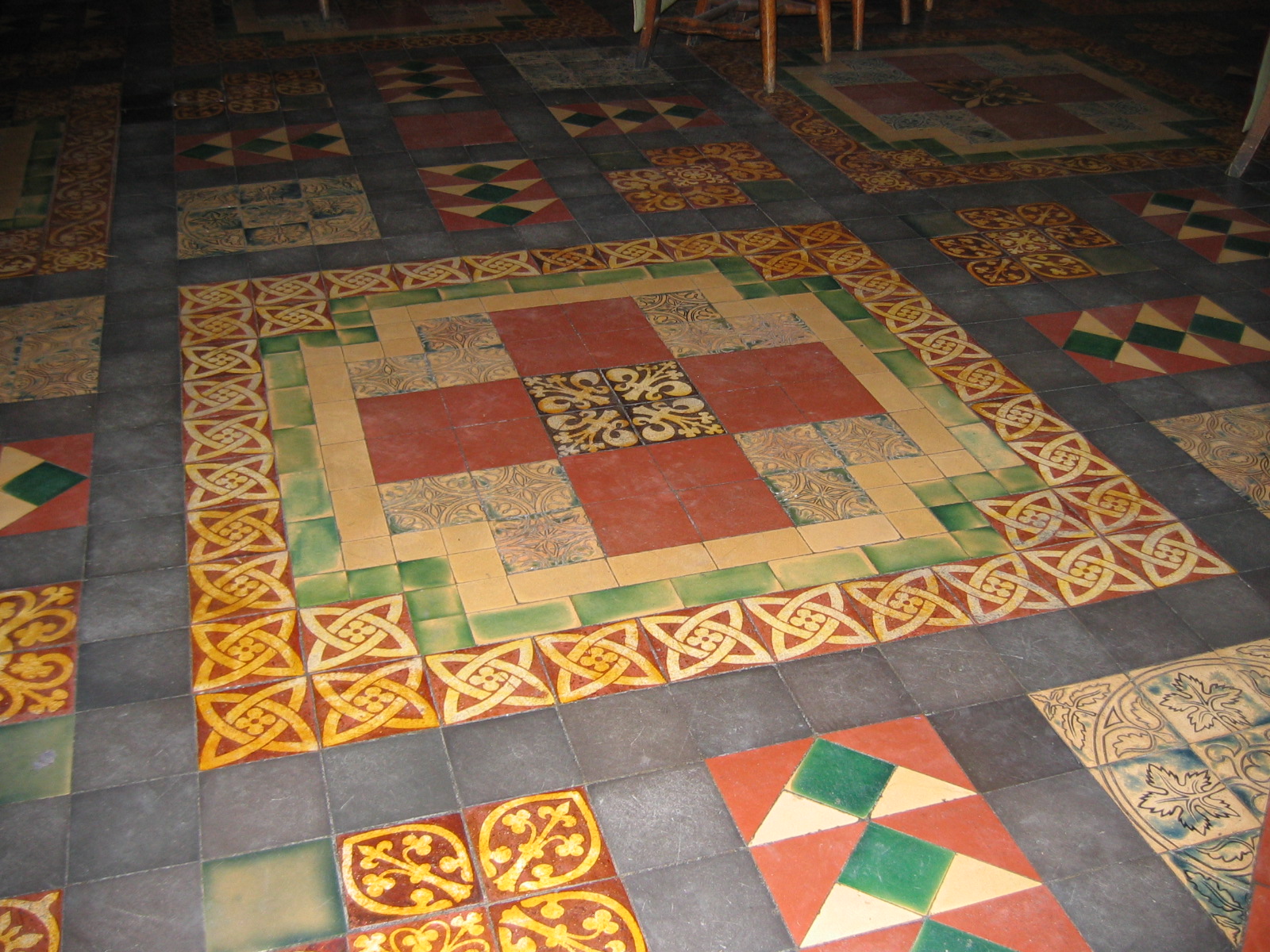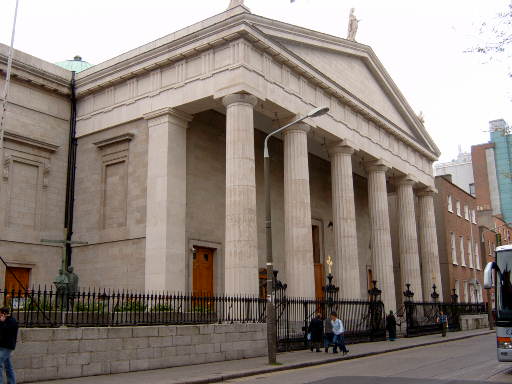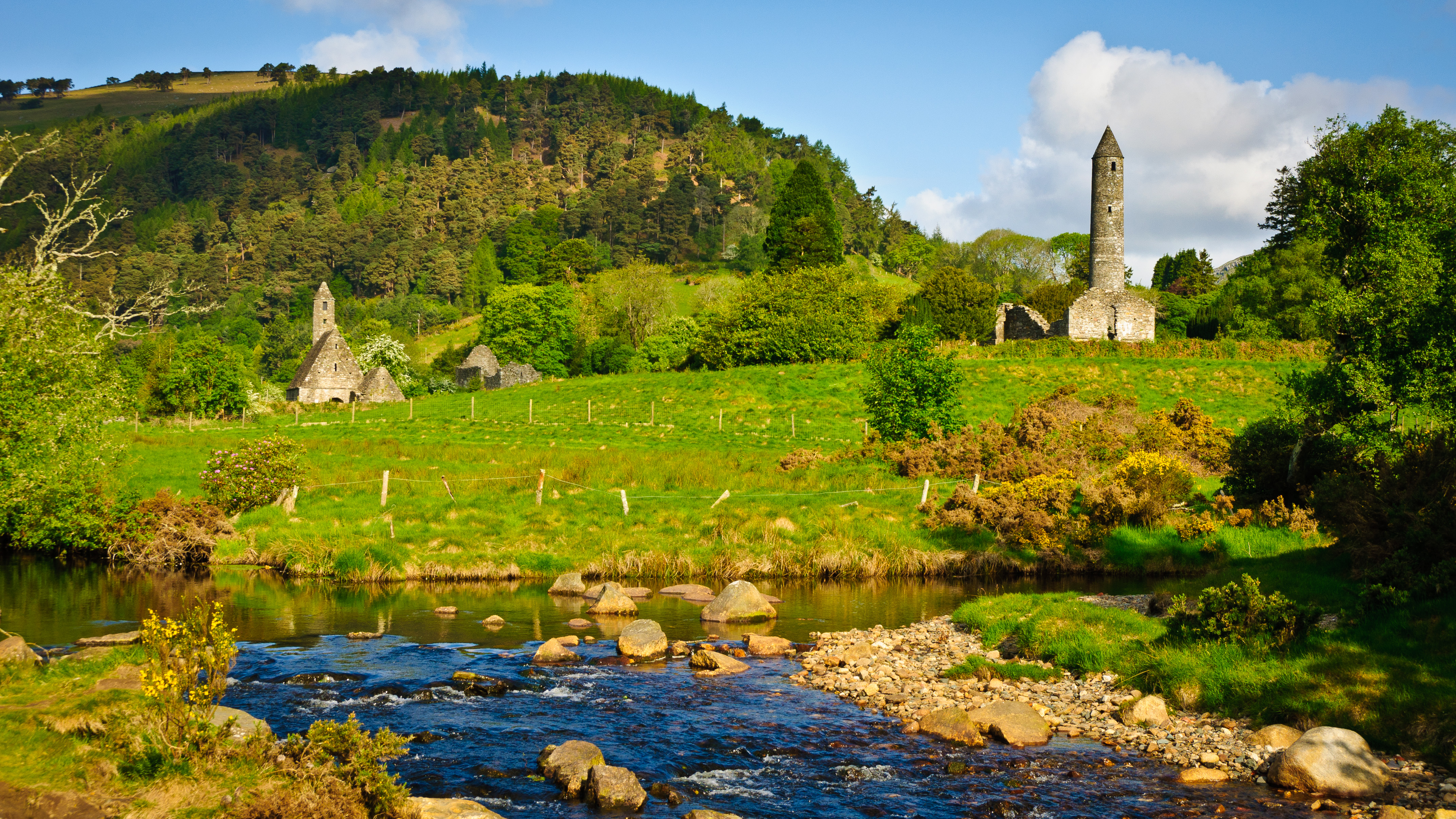|
Church Of St Mary On The Rock
The Church of St Mary on the Rock, or St Mary's Collegiate Church, was a secular college of priests based on the seaward side of St Andrews Cathedral, St Andrews, just beyond the precinct walls. It is known by a variety of other names, such as St Mary of the Culdees, Kirkheugh and Church of St Mary of Kilrymont. Although not founded as a collegiate church until the 1240s, Scotland's first, it represented a corporate continuation of the association of clergy known as the Culdees or ''Céli Dé'', "vassals of God". The church lasted for several centuries, but did not long outlast the Scottish Reformation, and today little of the original structure has survived. ''Céli Dé'' of Cennrighmonaidh St Mary's Collegiate Church has its origins in Kilrymont monastery and its group of canons called "Culdees" or '' Céli Dé'' ("Vassals of God"). These priests served a side altar in the Cathedral throughout the twelfth-century and into the thirteenth century. The ''Céli Dé'' were heade ... [...More Info...] [...Related Items...] OR: [Wikipedia] [Google] [Baidu] [Amazon] |
Baldwin Of Exeter
Baldwin of Forde or FordSharpe ''Handlist of Latin Writers'' pp. 66–67 ( – 19 November 1190) was Archbishop of Canterbury between 1185 and 1190. The son of a clergyman, he studied canon law and theology at Bologna and was tutor to Pope Eugene III's nephew before returning to England to serve successive bishops of Exeter. After becoming a Cistercian monk he was named abbot of his monastery at Forde and subsequently elected to the episcopate at Worcester. Before becoming a bishop, he wrote theological works and sermons, some of which have survived. As a bishop, Baldwin came to the attention of King Henry II of England, who was so impressed he insisted that Baldwin become archbishop. In that office, Baldwin quarrelled with his cathedral clergy over the founding of a church, which led to the imprisonment of the clergy in their cloister for more than a year. Baldwin spent some time in Wales with Gerald of Wales, preaching and raising money for the Third Crusade. After th ... [...More Info...] [...Related Items...] OR: [Wikipedia] [Google] [Baidu] [Amazon] |
Excommunication
Excommunication is an institutional act of religious censure used to deprive, suspend, or limit membership in a religious community or to restrict certain rights within it, in particular those of being in Koinonia, communion with other members of the congregation, and of receiving the sacraments. It is practiced by all of the ancient churches (such as the Catholic Church, Oriental Orthodoxy, Oriental Orthodox churches and the Eastern Orthodoxy, Eastern Orthodox churches) as well as by other Christian denominations; however, it is also used more generally to refer to similar types of institutional religious exclusionary practices and shunning among other religious groups. The Amish have also been known to excommunicate members that were either seen or known for breaking rules, or questioning the church, a practice known as shunning. Jehovah's Witnesses use the term disfellowship to refer to their form of excommunication. The word ''excommunication'' means putting a specific indiv ... [...More Info...] [...Related Items...] OR: [Wikipedia] [Google] [Baidu] [Amazon] |
Prior Of St Andrews
The Prior of St Andrews was the head of the property and community of Augustinian canons of St Andrews Cathedral Priory, St Andrews, Fife, Scotland. It was established by King David I in 1140 with canons from Nostell Priory, West Yorkshire. It is possible that, initially at least, the prior of St Andrews was subordinate to the bishop as abbot, but by the 13th century the canons of St Andrews were given freedom by the bishop to elect their prior. By the end of the 13th century, the abbacy of the native canons (i.e. the ''Céli Dé'', or Culdees) was no longer there to challenge the position of the priory, and the native canons themselves had been formed into a collegiate church. The position of prior became secularized and the priory itself carved up into lordships in the 16th century, although the core and title remained into the 17th century. The following is a list of known priors and commendators: List of priors * Robert I, 1140x1144-1160 * Walter I, 1160-1195 * Gilbert I ... [...More Info...] [...Related Items...] OR: [Wikipedia] [Google] [Baidu] [Amazon] |
St Patrick's Cathedral, Dublin
Saint Patrick's Cathedral () in Dublin, Ireland is the national cathedral of the Church of Ireland. Christ Church Cathedral, Dublin, Christ Church Cathedral, also a Church of Ireland cathedral in Dublin, is designated as the local cathedral of the Diocese of Dublin and Glendalough. Background Unusually, St Patrick's is not the cathedra, seat of a bishop, as the Archbishop of Dublin (Church of Ireland), Archbishop of Dublin has his seat in Christchurch Cathedral, Dublin, Christ Church Cathedral. Since 1870, the Church of Ireland has designated St Patrick's as the national cathedral for the whole of Ireland, drawing chapter members from each of the 12 List of Church of Ireland dioceses, dioceses of the Church of Ireland. The Dean of St. Patrick's Cathedral, Dublin, dean is the Ordinary (officer), ordinary for the cathedral; this office has existed since 1219. The most famous office holder was Jonathan Swift. Status Some believe it was intended that St Patrick's, a secular (di ... [...More Info...] [...Related Items...] OR: [Wikipedia] [Google] [Baidu] [Amazon] |
Henry De Loundres
Henry de Loundres (died 1228 in Ireland, 1228) was an Anglo-Normans, Anglo-Norman churchman who was Archbishop of Dublin (Roman Catholic), Archbishop of Dublin from 1213 in Ireland, 1213 to 1228. He was an influential figure in the reign of John of England, an administrator and loyalist to the king. He is mentioned in the text of ''Magna Carta'', the terms of which he helped to negotiate. He was St Mary's Church, Stafford, dean of Stafford in 1207 and commissioned a church in Penkridge. He had continuing interests in Staffordshire. He was justiciar in Ireland from 1213, his deputy Geoffery de Marisco executing the responsibilities during the bishop's absence in Rome. He unsuccessfully attempted to have one of his clerks appointed Roman Catholic Diocese of Cork and Ross, Bishop of Cork in 1214. He was resisted by Donnchad Ua Longargain, Roman Catholic Archdiocese of Cashel and Emly, Archbishop of Cashel, in his attempts to make the church hierarchy in Ireland more Anglo-Norman. ... [...More Info...] [...Related Items...] OR: [Wikipedia] [Google] [Baidu] [Amazon] |
Parish Church
A parish church (or parochial church) in Christianity is the Church (building), church which acts as the religious centre of a parish. In many parts of the world, especially in rural areas, the parish church may play a significant role in community activities, often allowing its premises to be used for non-religious community events. The Church architecture, church building reflects this status, and there is considerable variety in the size and style of parish churches. Many villages in Europe have churches that date back to the Middle Ages, but all periods of architecture are represented. Catholic Church Each diocese (administrative unit, headed by a bishop) is divided into parishes. Normally, a parish consists of all Catholics living within its geographically defined area. Within a diocese, there can also be overlapping parishes for Catholics belonging to a particular rite, language, nationality, or community. Each parish has its own central church called the parish church, ... [...More Info...] [...Related Items...] OR: [Wikipedia] [Google] [Baidu] [Amazon] |
Archbishop Of Dublin (Roman Catholic)
The Archbishop of Dublin () is the head of the Archdiocese of Dublin in the Catholic Church, responsible for its spiritual and administrative needs. The office has existed since 1152, in succession to a regular bishopric (subject to Canterbury, and within the wider jurisdiction of Glendalough) since 1028. The archdiocese is the metropolitan see of the ecclesiastical province of Dublin, and the archbishop is also styled the ''Primate of Ireland''. The cathedral church of the archdiocese is Saint Mary's Pro-Cathedral in Dublin city, although the Church formally claims Christ Church as its cathedral, and the archbishop's residence is Archbishop's House in Drumcondra. As of 2022, the incumbent ordinary is Dermot Farrell, who was installed on 2 February 2021. The office is not to be confused with a similar role in the Church of Ireland, though both claim a common descent from the head of the Norse Diocese of Dublin, appointed in 1028, and the elevation of the see in 1152. His ... [...More Info...] [...Related Items...] OR: [Wikipedia] [Google] [Baidu] [Amazon] |
Anglo-Normans
The Anglo-Normans (, ) were the medieval ruling class in the Kingdom of England following the Norman Conquest. They were primarily a combination of Normans, Bretons, Flemings, French people, Frenchmen, Anglo-Saxons and Celtic Britons. After the conquest the victorious Normans formed a ruling class in England, distinct from (although intermarrying with) the native Anglo-Saxon and Celtic populations. Over time, their language evolved from the continental Old Norman to the distinct Anglo-Norman language. Anglo-Normans quickly established control over all of England, as well as Norman invasion of Wales, parts of Wales (the Cambro-Normans, Welsh-Normans). After 1130, parts of southern and eastern Scotland came under Anglo-Norman rule (the Scoto-Norman, Scots-Normans), in return for their support of David I of Scotland#Government and feudalism, David I's conquest. The Anglo-Norman invasion of Ireland from 1169 saw Anglo-Normans and Cambro-Normans conquer swaths of Ireland, becomi ... [...More Info...] [...Related Items...] OR: [Wikipedia] [Google] [Baidu] [Amazon] |
John Comyn (archbishop)
John Comyn ( – 25 October 1212), born in England, was Archbishop of Dublin, Ireland. Life He was chaplain to Henry II and on his "urgent" recommendation was elected Archbishop of Dublin following the death of St. Laurence O'Toole in 1180.John D'Alton: ''Memoirs of the Archbishops of Dublin''. Hodges and Smith, 1838 He had been a Benedictine monk at the Evesham Abbey. In 1181, he was elected to the archbishopric of Dublin by some of the clergy of Dublin, who had assembled at Evesham for the purpose. He was not then a priest, but was subsequently, in the same year, ordained such, at Velletri, and on Palm Sunday (21 March) was there consecrated archbishop by Pope Lucius III. The following year the pope granted him manors and lands in and around Dublin, which subsequently formed the Manor of St. Sepulchre, which remained under the authority of the Archbishop of Dublin until the 19th century. The pope also, in an effort to protect the Dublin archbishopric from claims from Canterb ... [...More Info...] [...Related Items...] OR: [Wikipedia] [Google] [Baidu] [Amazon] |
Christ Church Cathedral, Dublin
Christ Church Cathedral, more formally The Cathedral of the Holy Trinity (Irish: ''Ardeaglais Theampall Chríost''), is the cathedral of the Diocese of Dublin and Glendalough, United Dioceses of Dublin and Glendalough and the cathedral of the ecclesiastical province of the Province of Dublin (Church of Ireland), United Provinces of Dublin and Cashel in the (Anglican) Church of Ireland. It is situated in Dublin, Republic of Ireland, Ireland, and is the elder of the capital city's two Middle Ages, medieval cathedrals, the other being St Patrick's Cathedral, Dublin, St Patrick's Cathedral. The cathedral was founded in the early 11th century under the Viking king Sitric Silkenbeard. It was rebuilt in stone in the late 12th century under the Norman potentate Richard de Clare, 2nd Earl of Pembroke, Strongbow, and considerably enlarged in the early 13th century, using Somerset stones and craftsmen. A partial collapse in the 16th century left it in poor shape and the building was extens ... [...More Info...] [...Related Items...] OR: [Wikipedia] [Google] [Baidu] [Amazon] |
Lorcán Ua Tuathail
Lorcán Ua Tuathail, known in English as Laurence O'Toole and in French as Laurent d'Eu (1128 – 14 November 1180), was Archbishop of Dublin (Catholic Church), Archbishop of Dublin at the time of the Norman invasion of Ireland. Lorcán played a prominent role in the Irish Church Reform Movement of the 12th century and mediated between the parties during and after the invasion. He was canonised in 1225 by Pope Honorius III. Early life Lorcán was born at Kilkea, County Kildare, Ireland, the youngest of four sons of King Muirchertach Ua Tuathail of the Uí Muiredaig, a branch of the Uí Dúnlainge dynasty. However, Castledermot claims him as well. His mother was an O'Byrne princess of the Uí Fáelán branch of the Uí Dúnlainge.Grattan-Flood, William. "St. Lawrence O'Toole." ''The Catholic Encyclopedia''. ... [...More Info...] [...Related Items...] OR: [Wikipedia] [Google] [Baidu] [Amazon] |




